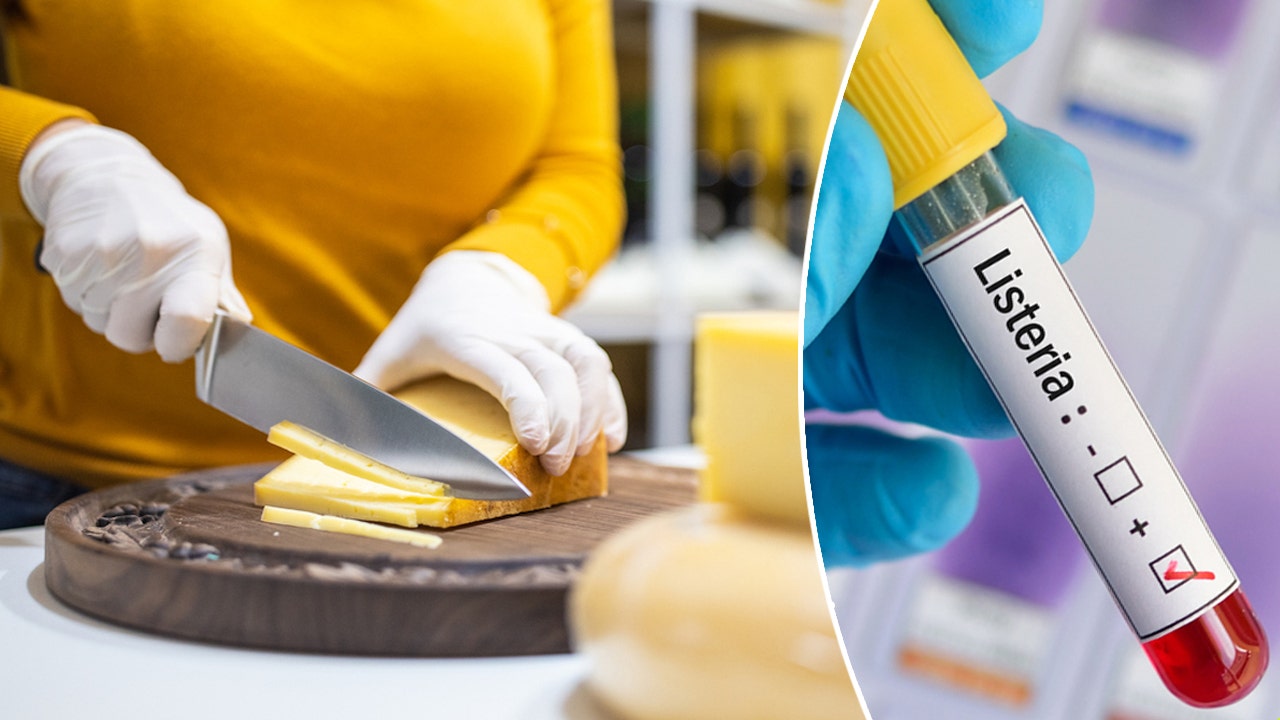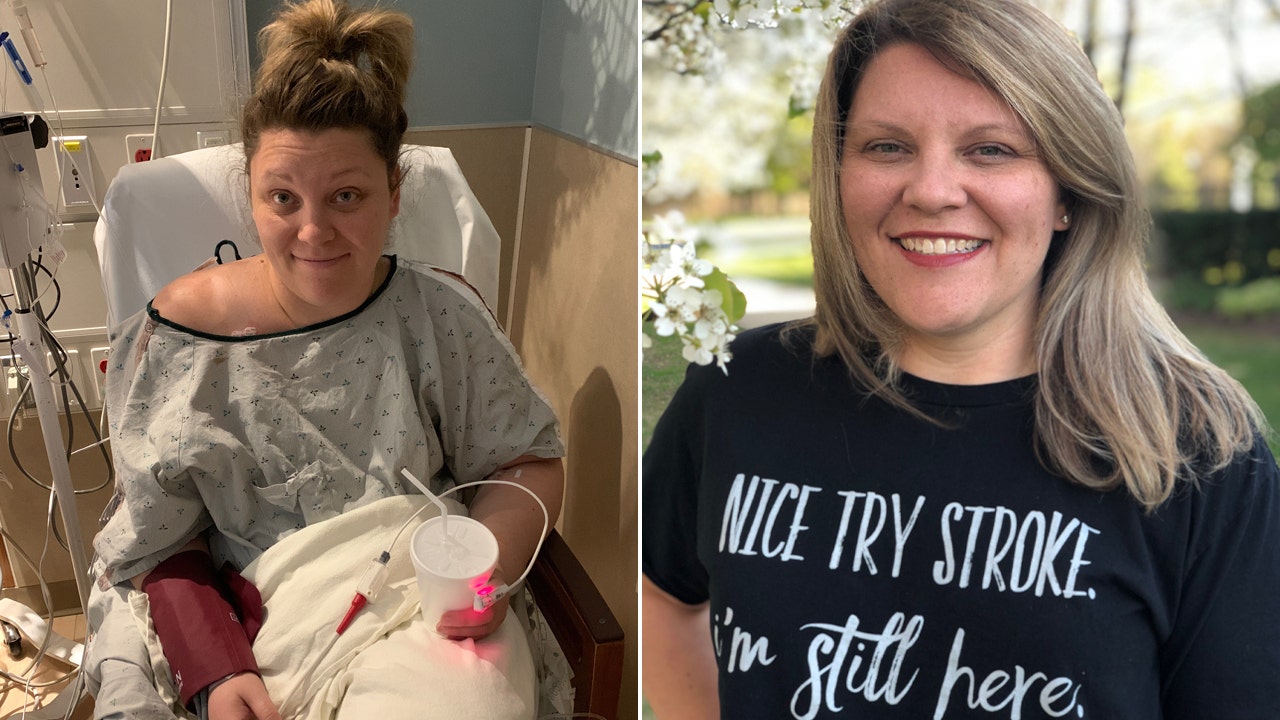Health
Listeria outbreak kills three adults in Washington state, health department confirms

Three people have died from a listeria outbreak in the state of Washington, the Department of Health there reported on July 21.
A total of five adults over 60 years of age are known to have developed “severe infections” from Listeria monocytogenes (listeriosis), including the three who died.
All five had “compromised immune systems,” the health department said in the public statement.
HOW TO PREVENT AND TREAT ILLNESSES THAT ARE MOST COMMON DURING THE SUMMER MONTHS
Listeria is a serious infection that most commonly comes from food that is contaminated with the bacterium Listeria monocytogenes, according to the Centers for Disease Control and Prevention (CDC).
Two of the infected adults were female and three were male.
Three people have died from a listeria outbreak in Washington, the state’s Department of Health reported on July 21. (iStock)
Four of them were from Pierce County and one was in Thurston County.
The Washington State Department of Health is investigating the infections, along with the Tacoma-Pierce County Health Department and Thurston County Public Health and Social Services.
FOOD POISONING RECENTLY? SICK RESTAURANT WORKERS MIGHT BE TO BLAME, SAYS CDC
“WA DOH is working with Pierce and Thurston County local health jurisdictions to gather information from interviews with patients and their families to help identify any common exposures,” the statement said.

The Washington State Department of Health is investigating the listeria infections, along with the Tacoma-Pierce County Health Department and Thurston County Public Health and Social Services. (iStock)
The individuals likely contracted the infection from the same food source based on genetic fingerprinting results, according to the statement.
They all became ill between February 27 and June 30.
Fox News Digital reached out to the Washington State Department of Health for comment, but had not heard back by the time of publication.
What to know about listeria
Around 1,600 people develop listeriosis each year in the U.S., resulting in around 260 deaths, per the CDC’s website.
ENOKI MUSHROOMS LINKED TO LISTERIA OUTBREAK IN TWO STATES: PUBLIC HEALTH OFFICIALS
Those who face the highest risk include pregnant women, newborn babies, adults 65 and older, and people with weakened immune systems.

Adults age 65 and older are among the highest risk groups. (iStock)
People outside the high-risk groups rarely display symptoms, the CDC stated.
Common symptoms among pregnant women include fever, muscle aches, fatigue and other flu-like symptoms.
In severe cases, the infection can cause miscarriage, stillbirth, premature birth or potentially fatal infection in the baby.
MEAT CONTAMINATED WITH E. COLI COULD CAUSE HALF A MILLION URINARY TRACT INFECTIONS EACH YEAR, STUDY FINDS
Symptoms in other groups may also include headache, stiff neck, balance problems, seizures and confusion.
Among those who are not pregnant, the death rate from listeriosis is about 5%, per the CDC.
Intestinal illness, including diarrhea and vomiting, can also occur for one to three days, usually starting within 24 hours of eating contaminated food.

In severe cases among pregnant woman, the infection can cause miscarriage, stillbirth, premature birth or potentially fatal infection in the baby. (iStock)
Diagnosis of listeriosis is confirmed via laboratory tests of the blood, spinal fluid or placenta.
For those with invasive illness, the most common treatment is antibiotics.
To prevent infection, people in high-risk groups should avoid eating foods that are more likely to be contaminated, according to the CDC.
CLICK HERE TO SIGN UP FOR OUR HEALTH NEWSLETTER
These include soft cheeses; meats, cheeses and salads from the deli; deli meats, cold cuts, hot dogs, and fermented or dry sausages; pâté or meat spreads; cold-smoked fish; sprouts; melons; and raw (unpasteurized) milk and raw milk products.
In November 2022, it was reported that a listeria outbreak caused at least one death and one pregnancy loss, with 16 confirmed cases across six states.
That outbreak was linked to sliced deli meats and cheeses, the CDC stated on its website.

Health
Ask a doctor: ‘Why am I hearing my heartbeat in my ears?’

You’ve likely felt your heart beating in your chest after strenuous activity — or have taken your pulse by placing your fingers on your wrist or neck.
A less common — and sometimes startling — sensation is to actually hear the “whooshing” sound of your heartbeat in your ears.
Fox News Digital reached out to two doctors to learn more about what causes this and whether it’s a cause for concern.
ANGER CAN INCREASE HEART ATTACK RISK, STUDY FINDS: ‘CHRONIC INSULT TO ARTERIES’
Hearing your heartbeat in your ears — also known by the Latin name “pulsatile tinnitus” — isn’t always a sign of a medical problem, but it could warrant a discussion with your physician, according to Frederick James Meine, M.D., an interventional cardiologist with Novant Health in Wilmington, North Carolina.
Hearing your heartbeat in your ears — also known by the Latin name “pulsatile tinnitus” — isn’t always a sign of a medical problem. Still, it could warrant a discussion with your physician. (iStock)
“Many people hear it at one time or another, especially when they are lying down on their side,” Meine told Fox News Digital.
What causes the condition?
Hearing your heartbeat can be related to ear issues such as wax buildup, fluid in the ear or other hearing issues, Meine said.
The most common cause is Eustachian tube dysfunction. This is usually due to allergies, according to Jesus Lizarzaburu, M.D., a family physician with TPMG Grafton Family Medicine in Yorktown, Virginia.
HALF OF AMERICANS NOT EQUIPPED TO PROVIDE LIFE-SAVING TREATMENT IN A CRISIS, POLL FINDS
“The Eustachian tube connects the middle ear to the back of your nose, and when it is blocked or doesn’t open and close properly, it can cause the sound of your heartbeat to be heard in your ears,” he told Fox News Digital.
Another culprit could be earwax buildup, which can also cause a seal in the ear canal that makes the heartbeat easier to hear, Lizarzaburu added.
Elevated blood pressure is another cause, though less common.

Hearing your heartbeat can be related to ear issues such as wax buildup, fluid in the ear or other hearing issues, a doctor said. (iStock)
On rare occasions, medications like non-steroidal anti-inflammatories (NSAIDs), antibiotics, diuretics, chemotherapy medications, aspirin, certain antidepressants, quinine and antivirals can cause tinnitus, a ringing in the ears that is in rhythm with the heart rate, noted Lizarzaburu.
“Extremely rare causes would be an aneurysm (a bulge in a blood vessel in the brain) or a vascular tumor, which is made up of a collection of blood vessels,” he added.
When to seek medical attention
A thorough physical exam, including a blood pressure check and an examination of the carotid arteries in the neck, is an important part of gauging overall cardiovascular health, Meine advised.
CLICK HERE TO SIGN UP FOR OUR HEALTH NEWSLETTER
“In addition, ruling out anemia or hyperthyroidism, both of which could cause increased blood flow and possibly contribute to pulsatile tinnitus, could be evaluated with simple lab tests,” he said.
If someone experiences the condition intermittently, it is likely less worrisome, the doctor noted.

A thorough physical exam, including a blood pressure check and an examination of the carotid arteries in the neck, is an important part of gauging overall cardiovascular health, a doctor advised. (iStock)
“However, if it is persistent or new-onset, we would perform a complete history and physical exam,” he said.
From a cardiovascular perspective, if someone is experiencing pulsatile tinnitus or hearing their heartbeat in their own ears, Meine said it’s important to rule out any potential cardiovascular issues.
The doctor would also make sure the patient does not have a blockage or narrowing of the neck arteries, which could contribute to louder heart sounds in the ears and head, he said.
“I do want to stress that most of us occasionally hear our heartbeats in our heads and ears, especially when our heart rate is increased during exercise,” Meine said.
For more Health articles, visit www.foxnews.com/health.
Health
FDA warns that nicotine-like chemicals in vapes may be more potent than nicotine

- Nicotine alternatives like 6-methyl nicotine in vapes may be more addictive than nicotine, according to the FDA.
- These synthetic substances are not regulated by U.S. tobacco and vaping laws that control traditional nicotine.
- Traditional nicotine is derived from tobacco leaves, while 6-methyl nicotine is synthesized in labs using chemicals.
Nicotine alternatives used in vapes being launched in the U.S. and abroad, such as 6-methyl nicotine, may be more potent and addictive than nicotine itself, though the scientific data remains incomplete, according to the U.S. Food and Drug Administration (FDA) and independent researchers.
The synthetic substances – which have a chemical structure similar to that of nicotine – are not subject to U.S. tobacco and vaping regulations that are designed to control traditional nicotine, a highly addictive drug.
That means manufacturers can sell vapes containing synthetic nicotine analogues such as 6-methyl nicotine in the United States without seeking authorization from the FDA – a process that can be costly, time-consuming and is often unsuccessful.
YOUNG VAPER WHO REQUIRED DOUBLE LUNG TRANSPLANT SHARES WARNINGS AS E-CIGARETTE SALES RISE
Big tobacco firms like Altria Group and British American Tobacco have already lost substantial U.S. sales to an influx of disposable vapes containing traditional nicotine that are being illegally sold without FDA authorization.
Various vapes, nicotine products and the new Spree Bar, which contains a chemical that mimics nicotine, line the shelves at Sultans’ Smoke in Arvada, Colorado, on May 21, 2024. (REUTERS/Kevin Mohatt/ File Photo)
Altria, the maker of Marlboro cigarettes in the United States, highlighted the emerging use of 6-methyl nicotine in vapes and other smoking alternatives in a May 9 letter to the FDA, according to a copy of the correspondence posted on its website.
It urged the agency to evaluate the compounds and establish what authority it had over them, warning they posed a “new threat” to regulation of the sector.
“The introduction and growth of chemicals intended to imitate the effects of nicotine, if left unchecked, could present unknown risks to U.S. consumers and undermine FDA’s authority,” the letter said.
SMOKING CIGARETTES CAN DESTROY LUNGS, BUT SHOCKING NEW STUDY REVEALS WHY VAPING CAN HARM THE HEART
It cited SPREE BAR, a vape launched in October by Charlie’s Holdings Inc that uses 6-methyl nicotine.
The FDA does not comment on its correspondence with individual firms.
In response to Reuters’ questions about 6-methyl nicotine and other nicotine alternatives, the FDA said in a statement: “Although more research is needed, some emerging data show these nicotine analogs may be more potent than nicotine – which is already highly addictive, can alter adolescent brain development and have long-term effects on youth’s attention, learning and memory.”
Traditional nicotine found in many vapes and pouches is extracted from tobacco leaves. 6-methyl nicotine, in contrast, is made entirely in the lab using chemicals.
The FDA said it was considering the use of such synthetic compounds from an “agency-wide perspective” and would use all of its resources to protect youth from products that may harm their health. As well as tobacco products, the FDA also regulates drugs, foods, cosmetics and more to ensure safety and efficacy.
“The FDA is a data-driven agency, and we’re in the process of reviewing the available data to inform potential actions in this space,” it said in response to Reuters’ questions.
Three academic researchers told the news agency that current studies of 6-methyl nicotine are too limited to draw definite conclusions on the health impact or to what degree it is addictive.
Imad Damaj, a professor in the Department of Pharmacology and Toxicology at Virginia Commonwealth University, said his research showed 6-methyl nicotine may be more potent than nicotine, but more extensive tests were needed to say what impact it has on humans.
The limitations of existing research included that some papers were industry funded, while others focused on the short-term impact on animals or cells and were insufficient to understand 6-methyl nicotine’s effects on human bodies, the researchers said.
Charlie’s Holdings calls the 6-methyl nicotine solution used in SPREE BAR Metatine. SPREE BAR’s website says Metatine “may have a toxicity profile similar to nicotine”.
SPREE BAR promises users 6,000 puffs from each device and offers fruity flavors including “blue razz ice” and “creamy melon”, according to its website.
The FDA has yet to approve any flavored vape using traditional nicotine for sale in the United States, saying companies have not been able to show that the health benefits they offer to smokers outweigh the known risks to young people, who may be more attracted by the flavors.
Charlie’s Holdings co-founder Ryan Stump told Reuters that the company only targets adults, adding that flavors played an important role in its mission to help smokers quit cigarettes.
Stump said Charlie’s Holdings respects and abides by laws in every market where it operates. He acknowledged that more research is needed on 6-methyl nicotine, adding that the company dilutes it in its products.
US SCHOOLS INVEST MILLIONS IN SURVEILLANCE TECHNOLOGY TO COMBAT TEEN VAPING EPIDEMIC
TARGETING INTERNATIONAL MARKETS
Anes Saleh sells SPREE BAR in his vape shop in Denver, Colorado, called Sultan Smoke. He said he has some customers who only buy Spree Bar instead of a nicotine vape and he hasn’t had any negative feedback on the product.
“The only… protest I would hear about people not wanting to try this is that they don’t know what Metatine is or does,” he said.
Stump said that Charlie’s Holdings is working on new varieties of SPREE BAR and new products using 6-methyl nicotine. It will launch SPREE BAR internationally this year. He declined to say where.
The company buys the 6-methyl nicotine solution used in SPREE BAR from another U.S. firm, Novel Compounds, according to Novel Compounds’ founder Samuel Benaim.
Novel Compounds imports 6-methyl nicotine from overseas and alters it to make it easier for manufacturers like Charlie’s Holdings to use in their products. It sells this solution under the trade name imotine.
Tests commissioned by Novel Compounds have found 6-methyl nicotine to be no more harmful than nicotine, Benaim said. But he also said that more research was needed into the chemical.
Benaim added that Novel Compounds had received legal advice that its product is not classified as a tobacco product or drug in the United States. The company is committed to legal compliance, he said.
MORE POTENT THAN NICOTINE?
Sven Jordt, a professor at Duke University, who has authored papers on products like SPREE BAR, said 6-methyl nicotine could me more addictive and toxic than its traditional cousin.
“Do we want to have such a chemical as a recreational product, available to anyone?,” he asked. “That’s really questionable.”
Neither Jordt nor Damaj – the professor at Virginia Commonwealth University – have received funding from tobacco or vape makers.
As well as the United States, Novel Compounds also sells its 6-methyl nicotine solution around the world, including in the United Kingdom, Indonesia, India and Japan.
Another company, Aroma King, sells 6-methyl nicotine in the United Kingdom in pouches, which users insert under the lip to get a buzz. The pouches are sold in cans emblazoned with graphics of gorillas in suits and sunglasses.
It said in a February blog post that its 6-methyl nicotine products were “less toxic”, “less harmful”, and “less addictive” than regular nicotine products.
In a statement to Reuters, Aroma King cited existing research, its own toxicology and other tests and its supplier, which classifies 6-methyl nicotine as less toxic under the European Union’s Classification, Labelling and Packaging of Substances and Mixtures (CLP) Regulation.
Aroma King said 6-methyl nicotine was self-classified by its supplier. It declined to say who supplies it with the chemical.
Four Chinese companies hold patents in China related to the production of 6-methyl nicotine, including Zinwi Biotech, a company that makes the liquid used in vapes.
Zinwi Biotech confirmed it is researching 6-methyl nicotine but did not answer further questions, including on whether it has sold any 6-methyl nicotine so far. Reuters was unable to find contact details for the other firms.
Health
Michigan mom: ‘I had a stroke at 39 — and the warning signs weren’t what you’d expect’

Jenna Gibson was just 39 when she was training for a marathon five years ago — but her plans were cut short by a stroke that almost took her life.
Nearly 60% of stroke deaths occur in women, according to a recent study by Mayo Clinic — and now Gibson, a Michigan mother of two, aims to help others to be more aware and prioritize their health.
“Once I learned that strokes are happening to younger people, I had to share my story,” she told Fox News Digital.
5 WOMEN’S HEALTH TIPS TO PREVENT AND DETECT STROKES, ACCORDING TO CARDIOLOGISTS
“In most cases, strokes are preventable if you know what to look for.”
On the day of Gibson’s stroke, she was feeling great.
Jenna Gibson was just 39 years old when she was training for a marathon five years ago — but her plans were cut short by a stroke that nearly took her life. (Jenna Gibson)
It was a beautiful day, she’d nailed a presentation at work, and she was enjoying a walk outside with her mother after dinner.
“We were talking about how I was training for the Detroit marathon for my 40th birthday, and then all of a sudden, out of the blue, it felt like I was hit with a ton of bricks,” she told Fox News Digital.
DOG ALERTS FAMILY, SAVES TEXAS TEENAGER FROM LIFE-THREATENING STROKE: ‘KEEPING GUARD’
Gibson stopped walking, then suddenly fell over into the grass.
Her mother thought she was joking at first. “She actually took a picture of me lying in the grass, saying, ‘C’mon, get up, what are you doing?’”
“They could see there was a blockage on the left side of my brain, and I was actively having a stroke.”
Her mother helped her up, but Gibson couldn’t walk straight.
“I felt like I was drunk — something just wasn’t right,” she said.
Even so, Gibson did not experience any of the textbook symptoms of a stroke, such as the facial droop, severe headache or vision disturbances.

When Gibson first fell onto the grass, her mother thought she was joking — and snapped this picture. As it turned out, Gibson was in the early stages of having a stroke. (Jenna Gibson)
They made it back home, where Gibson assumed she was having a migraine. She took some headache medicine and went to bed.
“A couple of hours later, I woke up and still didn’t feel right — I couldn’t get out of bed, I couldn’t move,” she recalled.
TIAS AND MINI-STROKE RISKS: CARDIOLOGIST SHARES WARNING SIGNS AND PREVENTION TIPS
That’s when they headed to the emergency room. Gibson’s mother told the medical team that her daughter was having trouble walking and might be having a stroke.
“They checked me over, did all the tests, and didn’t see the typical signs that they would be looking for,” Gibson said. “Part of it was because I was young.”
“I could walk, although not very well. I could get some words out.”
She added, “I didn’t have the facial droop. I could walk, although not very well. I could get some words out.”
After a CT scan, the medical team decided that Gibson was likely having an optic migraine. The next morning, when she still wasn’t feeling right, the neurologist ordered another scan with contrast — and that time, the stroke finally showed up.

Gibson is pictured with her husband and two daughters, who were ages 8 and 4 at the time of her stroke in 2019. (Jenna Gibson)
“They could see that there was a blockage on the left side of my brain, and I was actively having a stroke,” she said.
Gibson was immediately airlifted to another hospital, where she had emergency brain surgery to remove the blood clot.
“There was obviously a risk of death — if we didn’t move fast enough, the time frame would be over,” she said.
HIGH BLOOD PRESSURE A CONCERN WORLDWIDE, LEADING TO DEATH, STROKE, HEART ATTACK: HOW TO STOP A ‘SILENT KILLER’
As she was flown to the hospital, Gibson said she felt certain she was going to die and would never again see her husband or her daughters, who were just 8 and 4 at the time.
“I thought I’d never get to see my children grow up and get married, or that I’d have to live in some kind of vegetative state and would never work again.”

Gibson is pictured with her two daughters in the hospital after her stroke. Her first “assignment” was to tell her daughters that she loved them — and that “Mommy’s going to be OK.” (Jenna Gibson)
“I was thinking, ‘Did I tell my girls enough times that Mommy loves them? Does my husband know how proud I am of him?’”
The next thing she knew, Gibson was waking up from surgery in the ICU — and facing a long road to recovery.
“At first, I couldn’t speak at all. I couldn’t move my right side. I was trapped in my head — I could see what was happening and hear people asking me questions, but I couldn’t answer.”
‘By the grace of God’
Over the next few days, Gibson said her capabilities slowly started coming back.
She received speech therapy, occupational therapy and physical therapy — and over time began to regain movement on her right side.
REPORTS REVEAL THE RISK FOR STROKES IS ON THE RISE IN YOUNG ADULTS
Her first “assignment” was to tell her daughters that she loved them and that “Mommy’s going to be OK.”
After a couple of weeks, Gibson returned home and continued with outpatient therapy for three hours a day, three days a week for a four-month period.
“It was during the first six weeks that we saw the quickest improvement, and then after that, it was slower and slower,” she said.
“I had to relearn everything. And now, by the grace of God, I can do all the things.”

“I was thinking, ‘Did I tell my girls enough times that Mommy loves them? Does my husband know how proud I am of him?’” Gibson said about her stroke. She is pictured here with her husband and two daughters. (Jenna Gibson)
Today, Gibson is still completely numb on the entire right side of her body. She also still sometimes struggles with finding the right words while speaking, she said, especially when she’s tired or stressed.
“But if you saw me, I look like a normal person,” she said.
And in a full-circle moment, Gibson was finally able to complete the half-marathon last October.
‘Every second counts’
Dr. Annie Tsui, chief of neurology at Access TeleCare, who is based in Texas, emphasized the prevalence of strokes among women and urged awareness.
“Strokes can occur for various reasons across different age groups and genders,” Tsui, who was not involved in Gibson’s care, told Fox News Digital. “Even though strokes can occur at any age, women between the ages of 20 and 39 are at twice the risk compared to men.”
While the primary risk factors for stroke are high blood pressure, high cholesterol, heart disease, obesity and diabetes, the causes for strokes in younger age groups differ from those typically associated with older people, Tsui noted.

After her stroke was diagnosed, Gibson was airlifted to another hospital to get emergency brain surgery. (Jenna Gibson)
Those may include cardiac issues, blood clotting disorders, genetic predispositions, vascular abnormalities or trauma.
“Although no one is completely immune to the risk of stroke, individuals at higher risk should work with their doctor to develop a prevention plan,” Tsui advised. “In general, maintaining a healthy lifestyle is crucial, as up to 80% of strokes can be prevented.”
CLICK HERE TO SIGN UP FOR OUR HEALTH NEWSLETTER
It’s crucial to be aware of the symptoms to receive treatment as quickly as possible, according to Tsui.
She recommends using the FAST acronym, shown below, as a convenient tool for identifying stroke indicators.
- Face (drooping or numbness)
- Arm (weakness or numbness)
- Speech (slurring or difficulty speaking)
- T for time to call 911

Gibson underwent four months of intensive physical and occupational therapy during her recovery. (Jenna Gibson)
“The chances of survival and positive outcomes are highest when the patient receives prompt medical attention,” Tsui told Fox News Digital.
Some stroke treatments are only effective if administered within three hours of when symptoms begin, she warned — with the risk of permanent brain damage or death rising with each passing minute.
“It’s important to be vigilant in recognizing stroke symptoms and to seek medical assistance immediately at the first sign,” Tsui said.
“Every second counts in reducing the risk of brain injury, permanent disability or even death.”
For more Health articles, visit www.foxnews.com/health.
-

 Culture1 week ago
Culture1 week agoFrom Dairy Daddies to Trash Pandas: How branding creates fans for lower-league baseball teams
-

 World1 week ago
World1 week agoPanic in Bishkek: Why were Pakistani students attacked in Kyrgyzstan?
-

 News1 week ago
News1 week agoRed Lobster files for bankruptcy after missteps including all-you-can-eat shrimp
-

 News1 week ago
News1 week agoThe states where abortion is on the ballot in November : Consider This from NPR
-

 Politics1 week ago
Politics1 week agoMichael Cohen swore he had nothing derogatory on Trump, his ex-lawyer says – another lie – as testimony ends
-

 Movie Reviews1 week ago
Movie Reviews1 week agoMai Movie Review: Emotionally powerful lead performances in this sensitive and heart-breaking romantic film
-

 News1 week ago
News1 week agoCity of Kyle falls short of ‘Kyle’ world record
-

 Politics1 week ago
Politics1 week agoAnti-Israel agitators interrupt Blinken Senate testimony, hauled out by Capitol police















